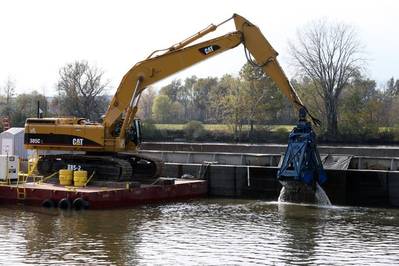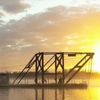Officials Urge EPA to Remove Toxic 'Forever Chemicals' from the Hudson River
U.S. Senator Kirsten Gillibrand earlier this month stood with local leaders and environmental advocates at Albany City Hall to demand that the Environmental Protection Agency (EPA) take additional action to clean up polychlorinated biphenyl (PCB) “forever chemicals” in the Hudson River.
PCBs are toxic manmade chemicals that can linger in water and soil for decades. Exposure is associated with a variety of serious health conditions, including cancer.
From 1947 to 1977, General Electric dumped 1.2 million pounds of PCBs into the Hudson River north of Albany. In 1984, the EPA designated a nearly 200-mile stretch of the Hudson River as a Superfund site, and in 2006, the agency mandated that GE clean a 40-mile section of the river from Fort Edward to Troy. This dredging of the Upper Hudson River, pursuant to the consent decree between EPA and GE, occurred from 2009 to 2015, but analyses of sampling data have found that significant amounts of PCBs remain in the river.
Officials are now calling on the EPA to take additional action to clean up the river and protect the wellbeing of those in the area.
“Nearly a decade after efforts to get PCBs out of the Hudson ended, it’s clear that the cleanup hasn’t decreased PCB concentrations to target levels,” said Senator Gillibrand. “PCB contamination is still unacceptably high, and it continues to pose a risk to everyone in the area. We have to do more to ensure that the Hudson is free of these dangerous, carcinogenic pollutants that harm humans, animals, and the environment.
“I’m calling on the EPA to acknowledge the insufficiency of the dredging remedy and to begin to investigate additional options to clean up the Hudson for good. I’m determined to get this done,” Senator Gillibrand said.
The EPA is currently developing the draft of its third five-year review (FYR) report of the Hudson River PCBs Superfund site to determine whether the dredging remedy is achieving key PCB-reduction targets established in the 2002 Record of Decision.
Gillibrand is calling on the EPA to acknowledge in this upcoming third FYR report that the dredging remedy is not working as intended and to begin the process of assessing additional remedial actions.











